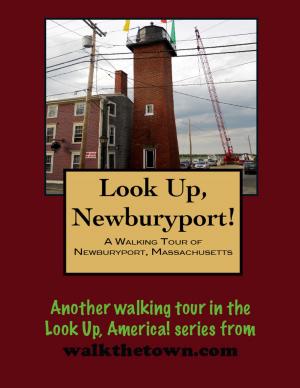| Author: | Doug Gelbert | ISBN: | 9781458087850 |
| Publisher: | Doug Gelbert | Publication: | March 5, 2011 |
| Imprint: | Smashwords Edition | Language: | English |
| Author: | Doug Gelbert |
| ISBN: | 9781458087850 |
| Publisher: | Doug Gelbert |
| Publication: | March 5, 2011 |
| Imprint: | Smashwords Edition |
| Language: | English |
There is no better way to see America than on foot. And there is no better way to appreciate what you are looking at than with a walking tour. This walking tour of Snow Hill, Maryland is ready to explore when you are. Each walking tour describes historical, architectural landmarks, cultural sites and ecclesiastic touchstones and provides step-by-step directions.
Every tour also includes a quick primer on identifying architectural styles seen on American streets.
The town of Snow Hill was founded in 1642 by English settlers on the deep water Pocomoke River. In 1686 the Town of Snow Hill was chartered; in 1694 it was made a Royal Port by William and Mary; imported goods came through Snow Hill to be taxed. Exported goods included cypress lumber and tobacco. In addition, Snow Hill was the home of a thriving ship-building industry.
In 1742, the Houses of Assembly approved “An Act to Divide Somerset County and to Create a new County on the Seaboard Side by the name of Worcester.” Snow Hill was named as that new county seat. In 1793 the town was platted into some 100 lots. As Snow Hill gained economic importance, the Pocomoke River became more heavily traveled. Large ships called on the little port town, offering overnight service to Norfolk and Baltimore. With the increase in river traffic, Snow Hill grew in other areas: hotels and boarding houses sprang up, and the Richardson, Smith and Moore Lumber Company dominated the waterfront as the largest employer in the County. General merchandise stores, liveries, coopers, smiths, and wagon-makers all took their living from the river traffic.
After the Civil War, the railroad found its way along Maryland’s Eastern Shore, providing fast, inexpensive transportation of goods and passengers. As the technology of land transportation grew, the Pocomoke River was used less. Snow Hill went into decline: the shipyards closed, the boarding houses became vacant. However, the people turned to the agricultural industry, growing corn, soybeans and livestock. Thus, Snow Hill remains.
A disastrous fire in 1893 destroyed the original downtown area, and the early town and county records housed in the Courthouse. The replacement building stock stands largely intact today; Snow Hill, still the county seat, has the largest inventory of historic, stately homes on the lower Eastern Shore.
Our walking tour will start along the scenic Pocomoke River where a grassy greenspace has been established and there is plenty of free parking...
There is no better way to see America than on foot. And there is no better way to appreciate what you are looking at than with a walking tour. This walking tour of Snow Hill, Maryland is ready to explore when you are. Each walking tour describes historical, architectural landmarks, cultural sites and ecclesiastic touchstones and provides step-by-step directions.
Every tour also includes a quick primer on identifying architectural styles seen on American streets.
The town of Snow Hill was founded in 1642 by English settlers on the deep water Pocomoke River. In 1686 the Town of Snow Hill was chartered; in 1694 it was made a Royal Port by William and Mary; imported goods came through Snow Hill to be taxed. Exported goods included cypress lumber and tobacco. In addition, Snow Hill was the home of a thriving ship-building industry.
In 1742, the Houses of Assembly approved “An Act to Divide Somerset County and to Create a new County on the Seaboard Side by the name of Worcester.” Snow Hill was named as that new county seat. In 1793 the town was platted into some 100 lots. As Snow Hill gained economic importance, the Pocomoke River became more heavily traveled. Large ships called on the little port town, offering overnight service to Norfolk and Baltimore. With the increase in river traffic, Snow Hill grew in other areas: hotels and boarding houses sprang up, and the Richardson, Smith and Moore Lumber Company dominated the waterfront as the largest employer in the County. General merchandise stores, liveries, coopers, smiths, and wagon-makers all took their living from the river traffic.
After the Civil War, the railroad found its way along Maryland’s Eastern Shore, providing fast, inexpensive transportation of goods and passengers. As the technology of land transportation grew, the Pocomoke River was used less. Snow Hill went into decline: the shipyards closed, the boarding houses became vacant. However, the people turned to the agricultural industry, growing corn, soybeans and livestock. Thus, Snow Hill remains.
A disastrous fire in 1893 destroyed the original downtown area, and the early town and county records housed in the Courthouse. The replacement building stock stands largely intact today; Snow Hill, still the county seat, has the largest inventory of historic, stately homes on the lower Eastern Shore.
Our walking tour will start along the scenic Pocomoke River where a grassy greenspace has been established and there is plenty of free parking...















